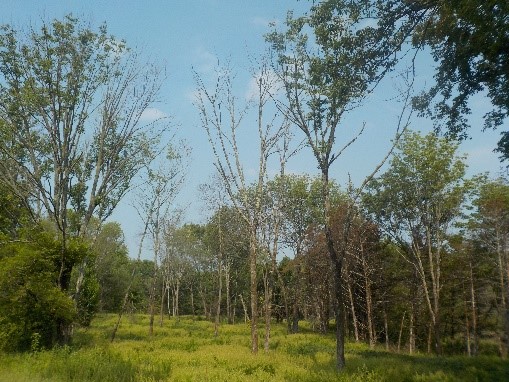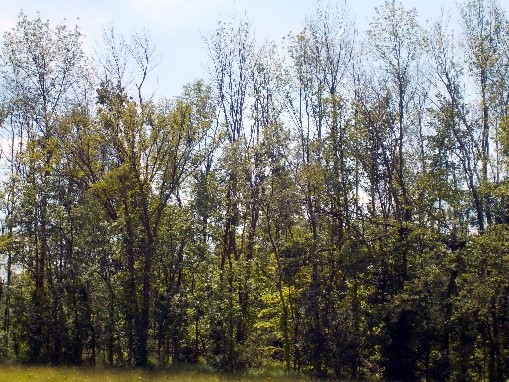In a recent visit to Pea Ridge Military Park, I was interested in seeing progress in eliminating invasive red cedar from the grounds. Cedar is notorious for invading old pastures in our area. Another tree that thrives in old fields is our white ash, a stately tree of upland forests. So, it was not unexpected to see large white ash trees left in the open forest when cedars are removed. What I had not expected to see was that these newly released ash trees (Pea Ridge photo) had large numbers of bare branches. I checked with a park ranger on his rounds and he verified that the emerald ash borer is now present at the park. We knew it was on its way and that all attempts at stopping the advance had been given up as futile (see the chapter of forest diseases in Ozark Forest Forensics).

Pea Ridge 2021
This will be a serious loss to our old growth forests. And it’s not just white ash on uplands. Green ash is a major part of forests adjacent to wet prairie environments and stream bottoms. Blue ash is a relatively rare but important tree around limestone ledges such as those along the Buffalo.
My other photo (Ohio 2019) is a scene from along the Scioto River in Ohio where a nearly pure green ash forest has been infested with the borer for some time.

Ohio 2019
The pest does not kill the trees instantly like elm disease, and it takes a few years for the borer grubs to literally eat the trees alive on the inside bark. But the advance continues to have the same dismal result as the borer spreads its way west.
